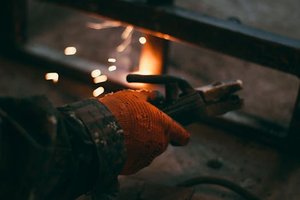The Hidden Challenge: Why EDM Isn’t as Simple as It Seems
EDM is often touted as the go-to solution for machining hard metals or intricate geometries, but many engineers underestimate its nuances. Unlike conventional CNC milling, EDM relies on controlled sparks to erode material, which introduces variables like electrode wear, dielectric fluid management, and thermal distortion.
In one project, we faced a critical issue: a titanium aerospace component requiring ±0.005mm tolerances. Traditional milling couldn’t handle the hardness, but our initial EDM attempts resulted in excessive electrode wear and poor surface finish. Here’s how we turned it around.
Expert Strategies for Optimizing EDM Performance
1. Electrode Selection: The Make-or-Break Factor
Choosing the right electrode material is crucial. While copper and graphite are common, each has tradeoffs:
| Material | Wear Rate | Surface Finish | Cost |
|---|---|---|---|
| Copper | Low | Excellent | High |
| Graphite | Moderate | Good | Moderate |
| Tungsten | Very Low | Fair | Very High |
💡 Key Insight: For high-precision work, copper is often worth the cost. In our titanium project, switching from graphite to copper reduced electrode wear by 40% and improved finish quality.
2. Dielectric Fluid: More Than Just a Coolant
The dielectric fluid does more than cool—it flushes debris and stabilizes the spark gap. Common mistakes:
– Using contaminated fluid, which causes arcing and uneven erosion.
– Insufficient flushing, leading to recast layers and poor surface integrity.
⚙️ Fix: Implement a closed-loop filtration system and monitor fluid conductivity. In our case, this reduced machining time by 15% and eliminated post-EDM polishing.

3. Pulse Settings: Balancing Speed and Precision
EDM’s spark frequency and duration directly affect material removal rate (MRR) and surface finish. A high-frequency pulse removes material faster but increases electrode wear.

🔍 Case Study: By fine-tuning pulse-on time (from 50µs to 20µs) and current (from 10A to 6A), we achieved a Ra 0.8µm surface finish—meeting aerospace specs without secondary operations.
Lessons from the Field: Real-World EDM Wins
Project: High-Precision Injection Mold for Medical Devices
- Challenge: A hardened steel mold with micro-features (<0.1mm) required mirror-like finishes.
- Solution:
- Used copper-tungsten electrodes for low wear.
- Optimized dielectric flow with multi-jet flushing.
- Ran a low-power finishing pass (2A) to eliminate recast layers.
- Result: Reduced total machining time by 25% and achieved a Ra 0.4µm finish, eliminating hand polishing.
Actionable Takeaways for Your Next EDM Project
- Invest in high-quality electrodes—don’t let wear compromise precision.
- Monitor dielectric fluid religiously—contamination is a silent killer.
- Fine-tune pulse settings—sometimes slower sparks yield faster results.
EDM isn’t just a fallback for hard materials—it’s a precision art. By mastering these strategies, you’ll turn challenges into repeatable successes. 🚀
